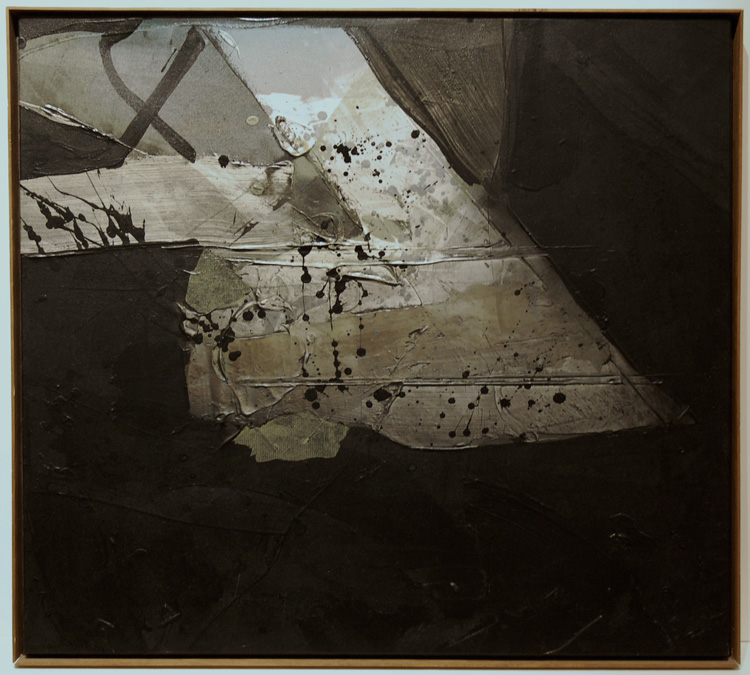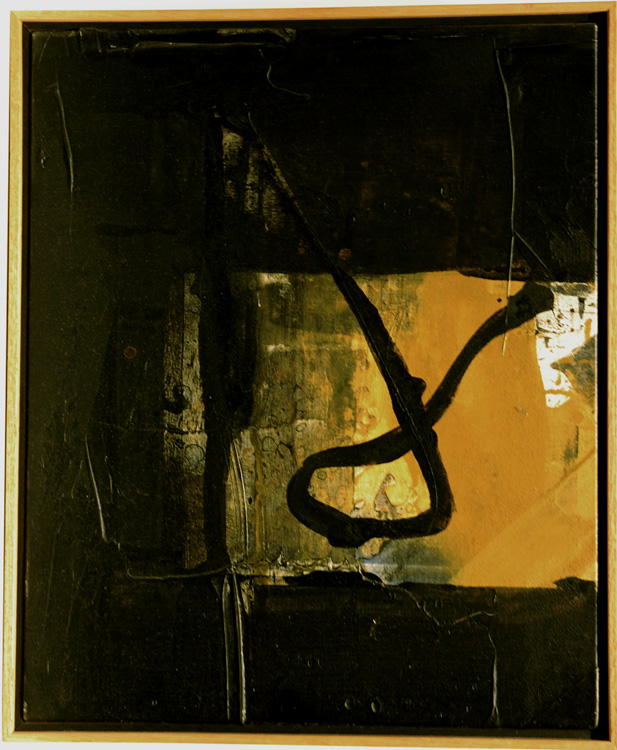|
|
In 1962, Bird left a successful design studio in England to live as an artist in Spain. He soon became affiliated with Galeria Joan Prats, one of the most prestigious galleries in Spain. After coming to the U.S. in 1980, one of the first people Bird looked up was Robert Motherwell. He and Motherwell became friends and exhibited their work together both in Spain and the U. S. After Motherwell’s death, Bird served as the only artist on the six-person board of the Daedalus Foundation, established by Motherwell to distribute his art to public institutions in the U.S. Bird’s works frequently illustrate Motherwell’s insistence that sometimes the artist is privileged to be “an expresser of adoration for the miracle of a world that has colors, meaningful shapes, as spaces that may exhibit the real expansion of the human spirit as it moves and has its being.” Bird's works frequently depict what he calls “Landscapes of the Mind,” most often keyed to his memories and feelings about Spain, but all concerned with the space in which the human spirit creates to discover its freedom. As Bird said in a 1990 essay for a show at Galeria Joan Prats, his longtome dealer, "If one accepts the premise that art can be the mirror within which we may see ourselves, then the quest should be to get the glass true. The problem is that it never is quite true and the image we see is distorted, but, before dismissing one mirror for another, judgment should be suspended, as mostly the unconscious reach is greater than the conscious grasp. It is obvious that great art has its source at some point beyond conscious striving, and if this fount is to become accessible it requires an act of faith on the part of the artist to do “nothing” and to allow the dreaming and fantasizing, that least understood part of the creative endeavor, to take place, the space in which the wretchedness of the human condition is re-composed and put into an acceptable form."
The critic Nissa Torrents characterized Bird's work of the 1980s by focusing on the impact of his use of color: "Jim Bird (Bloxwich, U.K., 1937), is a gentle giant in search of the fleeting. His impatience has a center, a strong longing for essences: for light, water, air and earth, basic components of landscape which he transforms in his abstract color fields, exploring the possibilities of the painterly. Bird’s work changes constantly. For him the outside world is a source of visual impulses, in constant renewal, which he transforms into pictorial language, never letting the received impression solidify. Open to the possibilities of constant renewal, Bird works quickly, attempting to preserve spontaneity, willing to move out of a field of exploration, however rewarding, in order to encounter new ones which will extend his world.
An essay by Peter Frank (The Art Journal, December 1990) focuses on Bird's surfaces, also instructively: "The paintings of Jim Bird, an Englishman who has worked for a long time in Catalonia, have begun to attract an audience in the United States at a time when the tradition those paintings seem to maintain is undergoing renewed scrutiny. Having suffered in America the all-too-common pattern of overexposure followed by neglect, “color-field painting” is now re-emerging as a valid method, substantiated both by the durability of its argument and the power—metaphoric and purely sensate—of its most cogent accomplishments. Jim Bird’s paintings provide such substantiation, not by reestablishing the theoretical or practical orthodoxies associated with what is still dismissed by many commentators as “formalism,” but by extending and modifying such orthodoxies." He continues:
Indeed, Bird is a “formalist” by accident. In Europe, what Americans would regard as formalism has long been supported by critical theories much more poetical and less scientistic than those associated most readily with Clement Greenberg’s later criticism. American eyes are likely to regard Bird’s fluid yet tightly controlled paints, their molten textures, and their basically mono- or bichromatic schemata as amplifications of Hans Hofmann’s achievements, and of Jules Olitski’s. There is a topical relationship, but Bird derives less from the American context than from a broader cluster of styles and attitudes, a cluster that effectively spans his continent, not ours.
The variegate approaches to abstraction which characterized European painting in the 1950s find themselves synthesized into Bird’s work, Nicolas De Stael’s coarse segments of flatly-spread paint, Pierre Soulages’ massive black gestures, the tendrilous whiplashes favored by some COBRA painters and the clotted masses of pigment favored by others, the piled and balanced forms in work by English painters such as Victor Pasmore and Howard Hodgkin, and perhaps most of all—the luminous expanses of earthy tonalities, interrupted by potently incised notations, associated with Antoni Tàpies and other Spanish informal painters all feed into Bird’s turgid, frequently dark, even dour, yet remarkably beautiful canvases.
If Bird, then, is renewing or sustaining a tradition of gestural field abstraction (a term better suited to his, and his predecessors’ effectively secondary use of color than “color-field painting,” with its suggestion of brilliantly-hued expanses), he does so by asserting a personal touch. Bird’s approach evinces several interpretations of the field-abstraction method, alone and especially in combination. Bird’s oeuvre does not seem at all eclectic, however; it is synthetic, superimposing and fusing those interpretations in a coherent and distinctive style. One can depend on Bird to employ a restrained palette; it tended to lighter, translucent colors in earlier works, but has more recently favored darker and more opaque tones—although these, crucially, are still inflected with the small but dramatic tonal shifts which have enlivened Bird’s work from the start. Throughout, Bird has established his sensuous surfaces with large expanses of emphatically troweled acrylic gel; the viscosity of the gel fixes the nuances of texture but lubricates them as well, giving them a slightly liquid hint of mutability. This sensation coordinated logically with the palette of the earlier, lighter canvases; in the newer paintings it comes as a contrast, an almost dialectical contravention to the overriding somberness of the color scheme. Bird offsets his new-found sobriety in other ways as well. Many of his paintings now feature relatively stark white areas interrupting the prevailing deep grays, greens, and browns; their almost chalky grit makes perfect textural and associative sense within the predominant flavor of sand and soil, but the color contrast, and the asymmetric placement of these lime-like outcroppings in the compositions, still startles. So does the deliberate but passionate inscription of looping trails of paint across light and dark regions alike.
These powerful serpentine lines—which virtually take over in certain of Bird’s smaller, rougher works, with their almost industrial grit and luster—at once contradict and reaffirm the physical and metaphorical field quality of the paintings. These trails attest to an organic presence generating from the proto-organic richness of earth.
For an artist not active to paint abstractly, it is recognized, is neither experimental nor regressive; it is simply an assertion of the interaction possible between an individual sensibility and a cluster of historical givens and possibilities. Whether or not a contemporary artist paints abstractly out of a self-conscious desire to maintain and extend a “tradition,” he or she can reify the validity of such a tradition by investing it with sufficiently distinctive concepts and practices. In his new paintings, particularly, Jim Bird renews and clarifies field painting, with, without, and beyond color.
Clearly, color, line, and gesture are crucial to almost any work of art; what is interesting here is that each of these critics stresses the primacy of a different one over the others before acknowledging Bird's mastery of all. Spaightwood has a substantial number of works by Bird in inventory, including paintings on canvas and paper, monotypes, mixed media works, lithographs, etchings, and pastels. We are featuring the pastels here, but will add other works in the coming months.
Jim Bird's work has been shown at galleries and museums in Spain, England, Germany, and the U. S. (Barcelona, Madrid, London, New York, Chicago, Madison, and Palo Alto, among other sites); he has also been shown at the Basel Art Fair, the International Navy Pier Exposition in Chicago, and the International Print Biennale (England). Jim Bird was also in the news when The Journal of Art illustrated one of his monotypes (one of the Madison Series executed at Wayne Taylor’s studio and published by Spaightwood Galleries several years ago) in an essay entitled, “The Elusive Monotype: Painting or Print?” in the June-July-August 1991 issue. In 1994, his work was featured in the first issue of Graven Images: Studies in Culture, Law, and thee Sacred (published by the University of Wisconsin Law School), and one of his etchings was featured on the rear cover.
|
|
|
|
|




